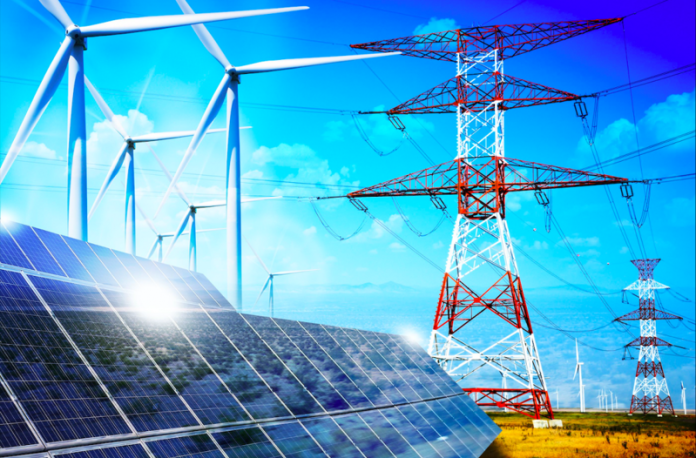Earlier this week, the Government of Vietnam issued Decision 500/QD-TTg approving the National Electricity Development Plan For 2021 – 2030, with a Vision To 2050. Known more commonly as the Power Development Plan 8 (PDP8) this masterplan has been almost three years in the making and is the result of a multitude of drafts and revisions.
The PDP8 offers broad and valuable insights into the thinking of Vietnam’s key decision-makers in terms of where they see the future of electricity production and distribution in Vietnam.
The PDP8 highlights the significant investment required to develop Vietnam’s energy sector and presents potential opportunities for foreign energy firms. Here are the key highlights from the PDP8.
The PDP8 assumes that Vietnam will achieve an average GDP growth rate of around 7 percent per year from 2021 to 2030, followed by an average growth rate of 6.5 to 7.5 percent per year between 2031 and 2050.
According to these projections, commercial electricity consumption is expected to reach approximately 335 billion kWh by 2025 and around 505.2 billion kWh by 2030. By 2050, this figure is anticipated to increase to a range of 1,224 billion kWh to 1,378 billion kWh.
The PDP8 takes into account the Just Energy Partnership Agreement, which has influenced the incorporation of renewable energy into the plan. However, if this agreement is not fully realized, it may impact the final outcomes of the plan.
Where will Vietnam’s power come from?
Wind
With respect to wind power, according to the PDP8, Vietnam is targeting the following production goals:
- Onshore wind power to be developed to a capacity of 21,880 Megawatts (MW) by 2030.
- Offshore wind power to be developed to a capacity of 6,000 MW by 2030.
- Further development of offshore wind power to a capacity of 70,000 to 91,500 MW of electricity by 2050 – if technology capabilities and costs allow.
Solar
Solar power in Vietnam is playing an increasingly significant role in the nation’s energy mix. It is estimated that solar power in Vietnam has the potential to provide up to 963,000 MW of electricity split between 837,400 MW on the ground, 77,400 MW from floating solar, and about 48,200 MW from rooftop solar.
Using these estimates as a base, per the PDP8, Vietnam expects the following:
- The capacity of solar power will increase by 4,100 MW.
- For rooftop solar power production to increase by 2,600 MW by 2030.
Biomass energy
Biomass and waste-to-energy power plants are emerging sources of energy in Vietnam with significant potential. According to the PDP8, these sources have the capacity to generate up to 7,000 MW of electricity in the future. However, the plan estimates that by 2030, the combined capacity of biomass and waste-to-energy plants will reach 2,270 MW. Vietnam aims to further develop these energy sources and increase their capacity to 6,015 MW by 2050.
Hydropower
Hydropower sources in Vietnam have the potential to produce up to 40,000 MW of electricity. The total capacity of hydropower, including small hydroelectricity plants, is expected to reach 29,346 MW by 2030. If the conditions are right, by 2050, the total capacity could reach 36,016 MW, according to the PDP8.
Stored power
Vietnam recognizes the significance of stored power in managing electricity loads on national grids globally. In order to incorporate this technology into its electricity supply, Vietnam has outlined the following plans:
- By 2030, the aim is to develop stored hydropower with a capacity of approximately 2,400 MW.
- Additionally, if favorable conditions are met, Vietnam intends to develop 300 MW of battery storage by 2030.
Coal
Regarding coal, Vietnam foresees a total operational capacity of approximately 30,127 MW by 2030.
The plan for coal entails the following measures:
- Continuing the implementation of projects already included in Power Plan VII and currently under construction.
- Converting power plants that have been in operation for over 20 years to alternative fuels once they become cost-effective and feasible.
- Decommissioning coal plants older than 40 years that cannot be converted to alternative fuels.
- Prioritizing six projects with a total capacity of 6,125 MW: Na Duong II, An Khanh – Bac Giang, Vung Ang II, Quang Trach I, Van Phong I, and Long Phu I. These projects exclude the 13,220 MW of coal-fired power capacity, which includes Quang Ninh III, Cam Pha III, Hai Phong III, Quynh Lap I, II, Vung Ang III, Quang Trach II, Long Phu II, III, Tan Phuoc I, II.
- Converting the Quang Trach II project to LNG (liquefied natural gas) before 2030.
- Phasing out the use of coal for power generation by 2050. All coal plants will either be decommissioned or converted to utilize biomass energy or ammonia.
Gas
Gas is poised to become Vietnam’s primary power source by 2030, offering an improvement over coal in terms of its environmental impact.
The plan for the gas sector moving forward includes the following measures:
- Giving priority to the Block B Ca Voi Xanh gas power project, which will contribute 6,900 MW of gas power. This project involves plants such as O Mon II, III, and IV (totaling 3,150 MW), Central I and II, and Dung Quat I, II, and III (totaling 3,750 MW). Additionally, O Mon I (660 MW) will be converted to use Block B gas.
- Implementing a mixed gas turbine plant (TBKHH) in Quang Tri, utilizing gas from the Bao Vang field, with a capacity of 340 MW.
- Accelerating the exploration and evaluation of the Ken Bau gas field.
Considering these projects, the total capacity of gas power production is expected to reach 37,630 MW by 2030. By 2050, the majority of Vietnam’s gas power plants are projected to transition to hydrogen, with only 11,042 MW of power generated from traditional gas sources.
Source: Vietnam Briefing







